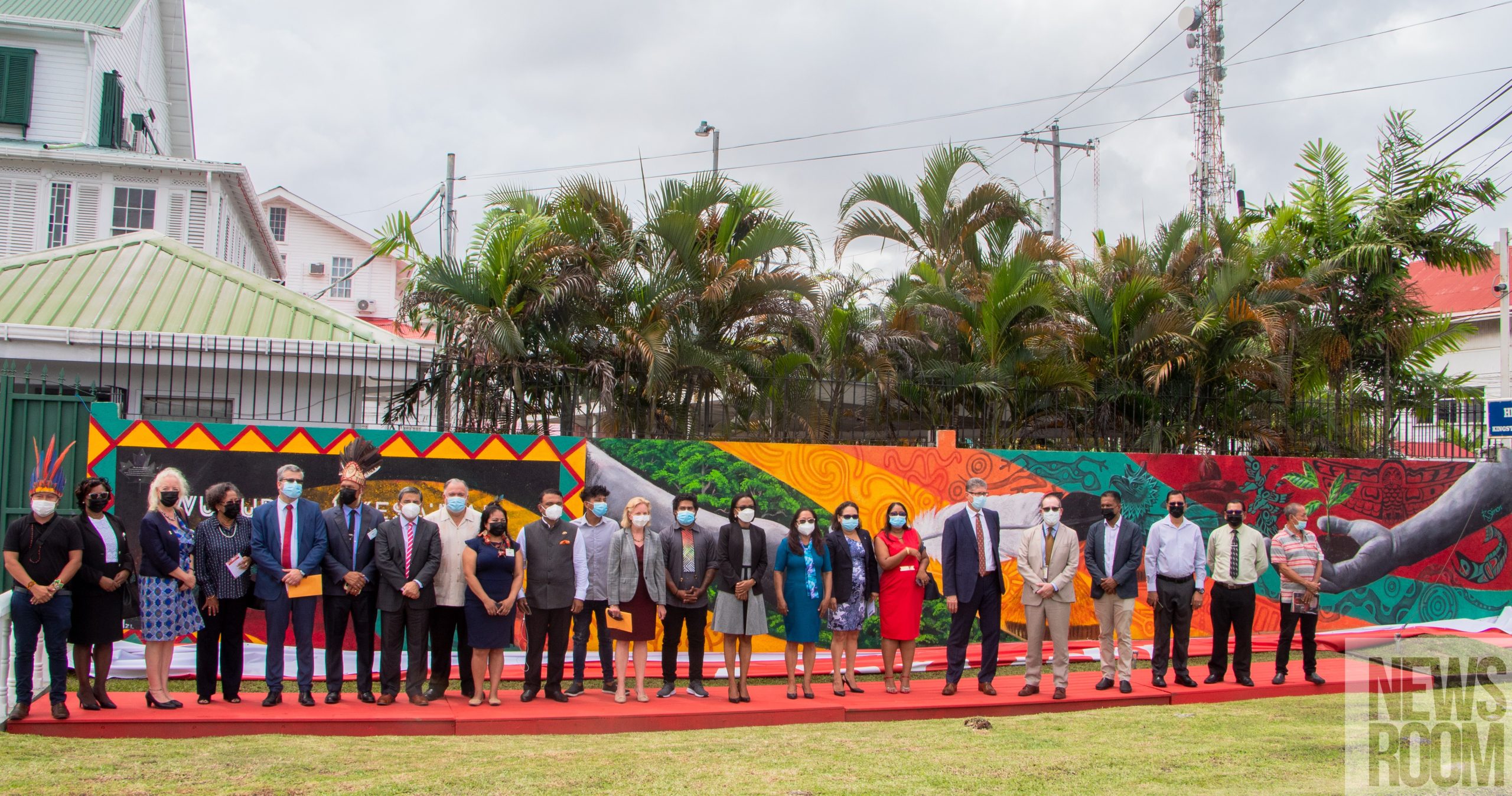
Homage to indigenous people’s culture & identity – as mural unveiled at Canadian High Commission
Featuring words written in the Akawaio language, a colourful and deeply symbolic mural was unveiled at the Canadian High Commission in Kingston, Georgetown on Tuesday as part of efforts to tangibly pay homage to the culture and identity of indigenous people in Guyana and Canada.
The mural found on the northern fence of the High Commission’s building was created under the title: “We, the First People.” It was created by a group of young indigenous artists Nigel ‘Nix’ Butler and Ransford Simon.
Butler says part of the design of the mural emphasises the human connection that people share with each other. But, while he designed this artwork, he urged that people reflect on what the expression means for them.
Already, however, several individuals shared what they believed the indigenous mural signified.
“This work of art – prominently placed as it is – will add to the voice and visibility of our Indigenous peoples,” Minister of Tourism, Industry and Commerce Oneidge Walrond stated at a short ceremony at the High Commission.
She pointed out that the mural adds to the existing Umana Yana and Guyana Marine Turtle monuments, both of which are “intimately connected” to the indigenous people of Guyana; the Umana Yana represents a traditional meeting place, while the leatherback turtle is an endangered species that indigenous people have been trying to save.

And Walrond further posited, “Affording our indigenous people this place of prominence in our local cultural landscape through initiatives such as this is long overdue.
“… it is nothing more than that which our first people are entitled to as a matter of right.”
Why this is such an important consideration, she explained, is because indigenous people in Guyana and Canada have historically been marginalised due to the experience of colonial rule and entrenched inequalities.
This was acknowledged by Canadian High Commissioner Mark Berman. According to him, Canada is still attempting to reflect on its past with the injustices meted out to their indigenous people, while striving towards greeted inclusion and even, reconciliation.
“We acknowledge that Canada has historically denied the rights of indigenous peoples through assimilationist policies and practices.
“Be it at home or abroad, we believe that reckoning with human rights violations and abuses, engaging in meaningful dialogue and working together as partners are foundational to creating more inclusive societies where all can fully enjoy their human rights,” Berman stated.
And for him, the mural is a way of using art to make connections with the indigenous culture and people, while affording indigenous people with the respect they deserve.
Meanwhile, the Minister of Amerindian Affairs Pauline Campbell- Sukhai emphasised that it is important for people to be reminded of the indigenous people’s culture, identity and way of life.
But it is not only that people should be occasionally reminded of this. Campbell- Sukhai noted that “calculated and specific” actions must be taken to ensure that the indigenous culture is preserved.
And that, she said, can be done through actions like creating this mural.







